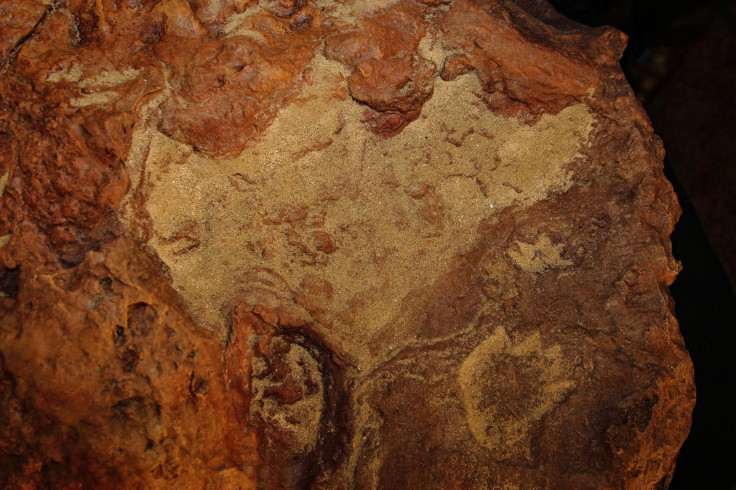Dinosaur Tracks Discovered At NASA Space Flight Center Reveal Prehistoric America

Dinosaur tracks hiding on NASA property date back more than 100 million years and reveal what prehistoric Maryland’s environment may have looked like.
There are dozens of tracks that dinosaurs and other extinct animals embedded in a chunk of sandstone over the course of a few days during the Cretaceous geological period, the space agency reported. The animals range in size from a mammal the size of a squirrel all the way up to “tank-sized dinosaurs.”
“The concentration of mammal tracks on this site is orders of magnitude higher than any other site in the world,” paleontologist Martin Lockley said in the NASA statement. “I don't think I’ve ever seen a slab this size, which is a couple of square meters, where you have over 70 footprints of so many different types. This is the mother lode of Cretaceous mammal tracks.”
Those impressions were first discovered at the Goddard Space Flight Center in 2012 and underwent analysis.
In a study in the journal Scientific Reports, researchers described the imprints, which include a new kind of fossilized tracks that suggest an animal was sitting down. The creatures who made them, about the size of a squirrel, left only traces of their hind feet.
There were also tracks from the winged reptiles called pterosaurs and from a baby and an adult nodosaur that were probably walking together.
All of the animals that left their impressions behind may have been searching for food, whether they were after worms or smaller dinosaurs to prey upon.
“It’s a time machine,” researcher Ray Stanford, who discovered the tracks while dropping off his wife at work on the Goddard campus, said in the NASA statement. “We can look across a few days of activity of these animals and we can picture it. We see the interaction of how they pass in relation to each other. This enables us to look deeply into ancient times on Earth. It’s just tremendously exciting.”
According to the scientists, the newly analyzed tracks could give them a better understanding of the entire prehistoric ecosystem in Maryland.
During the Cretaceous, that state was hotter and more swamp-like.
“This could be the key to understanding some of the smaller finds from the area, so it brings everything together,” Lockley said. “This is the Cretaceous equivalent of the Rosetta stone.”
© Copyright IBTimes 2025. All rights reserved.





















